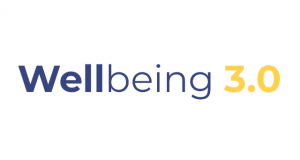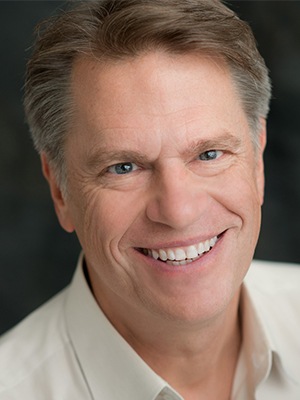

How Closely Are You Thinking About These 3 Ways To Recruit and Retain Talent?
Every time an economically seismic event happens, the recovery phase is accompanied by change and adapting to that change. This time around, employees everywhere are evaluating their current situation and feel empowered to ask for more from their employer… or else they’ll find a new one that will provide them with what they need. And it’s incumbent on organizations to understand the “great resignation” isn’t just about work flexibility — the root cause is much deeper.
Things Ain’t Like They Used To Be
The collective experience of COVID-19 led many to completely rethink their work lives as something more than a paycheck, and it’s been a long time coming. We devote a third of our lives to our work. Many of us make it part of our identity. And organizations that aren’t demonstrating to their people that they’re heard, understood, and valued at a root cause level today, aren’t going to be around for the next economically seismic event. To truly show that you care about your people and attract new talent, help your people stay emotionally well and address the needs of their families. It’s time for a brand new approach to wellbeing that removes the barriers preventing individuals from being the best versions of themselves.
So how does a valiant HR or recruitment leader who seeks to recruit, retain, and nurture top talent create a culture of “we do care about you here”?
Get Familiar With Social Determinants of Health
Social Determinants of Health (or SDOH) are social and economic factors that are often root causes of employee health issues, lost productivity, and reduced engagement. Nuanced and subtle elements emerge under this umbrella, even in well-paying jobs. Factors such as food insecurity, financial stress, housing insecurity, childcare, eldercare struggles, emotional wellbeing, lack of reliable transport account for over 70% of health outcomes.
Social Determinants of Health directly impact nearly one-third of all working Americans.
Hardly An Interview Conversation
Anxieties that follow us daily, whether on the forefront or the backburner, are hardly things that tend to be discussed in job interviews or even among seasoned employees. Yet, we all deal with them. We strive to separate our stress from our work, which sets the standard for a growing discontent with work and an inability to handle piling pressure. The American Psychological Association estimates the sum lost to workplace stress to be over $500 billion annually.
3 Behaviors of Recruiting and HR Leaders Seeking To Attract and Retain Talent
Employees who have long been accustomed to the idea that stigma around wellbeing is a default feature of the office are now increasingly looking for places where their overall wellbeing is a part of the company culture.
1. Take an honest look in the mirror and identify gaps that exist within your organization
It’s time for talent acquisition leaders and HR leaders to take a deep breath and inventory what is missing in the employee experience, especially regarding the Social Determinants of Health. Now is as good of a time as any, as employees return to the workplace more burned out than before the pandemic.
2. Realize a good paycheck does not solve all these needs
While having a job and a career that pays well are pivotal items to check off the list of a professional’s goals, they certainly do not solve other stressors, especially if they are exasperated by workplace stress. Benefits leaders should be aware that unaddressed issues exist and sneak their way into motivation, productivity, and work culture when left unchecked. However, unaddressed does not mean unaddressable.
3. Set the table with an open invitation
Good things happen when employees feel their employers are looking out for them. However, the stigma around vocalizing one’s struggles, especially at the average workplace, makes it wildly improbable that employees seek this out directly from their employer. They will, however, notice and gravitate to employers who proactively and preemptively set them up with resources that seek to alleviate anxieties, reduce stress, and offer real-world solutions.–
The Next Normal For Wellbeing
All too often, wellbeing is glossed over in the benefits world as a boilerplate program that does not consider that the employee is an individual with unique needs that are going unmet. Even in jobs where people get by just fine, there are trailing anxieties around essentials like food, housing, childcare, eldercare, and so on. When these needs go ignored or unmet, employees disengage. The other end of the spectrum is just as powerful. When employees feel seen and supported by their employer, good things happen — like a spike in productivity.
A wellbeing experience that is authentic, inclusive, and able to connect its employees to resources that address their unique needs brings even more benefits. Employees whose personal purpose is supported are more likely to stick around, more likely to talk about their organization as a “we” rather than a “them,” and have a stronger sense of purpose at work.
In light of the Delta variant, the workplace is bouncing back from COVID-19 slower than we thought a few months ago, but new expectations around wellbeing persist. “We’re in this together” is more than a platitude now. It’s a chance for hiring leaders and recruiters to enhance their organization’s work experience and nurture talent. Leaders who do not show up for their employees may face higher turnover, as employees leave for places where their expectations for wellbeing are being met.
About the Author

Vic Strecher, PhD, MPH
CEO and Chief Purpose Officer, Kumanu
Vic Strecher is professor of Public Health, founder of the Center for Health Communications Research, and Director for Innovation and Social Entrepreneurship at the University of Michigan. In 2015, Vic launched Kumanu, leading a paradigm shift in how individuals engage in the pursuit of purpose, meaning, and wellbeing. As CEO and chief purpose officer, Vic leads the company as well as its world-class Scientific Advisory Board.
Stay on top of the news
Subscribe today and receive our Reimagining Wellbeing newsletter delivered to your inbox every month!
